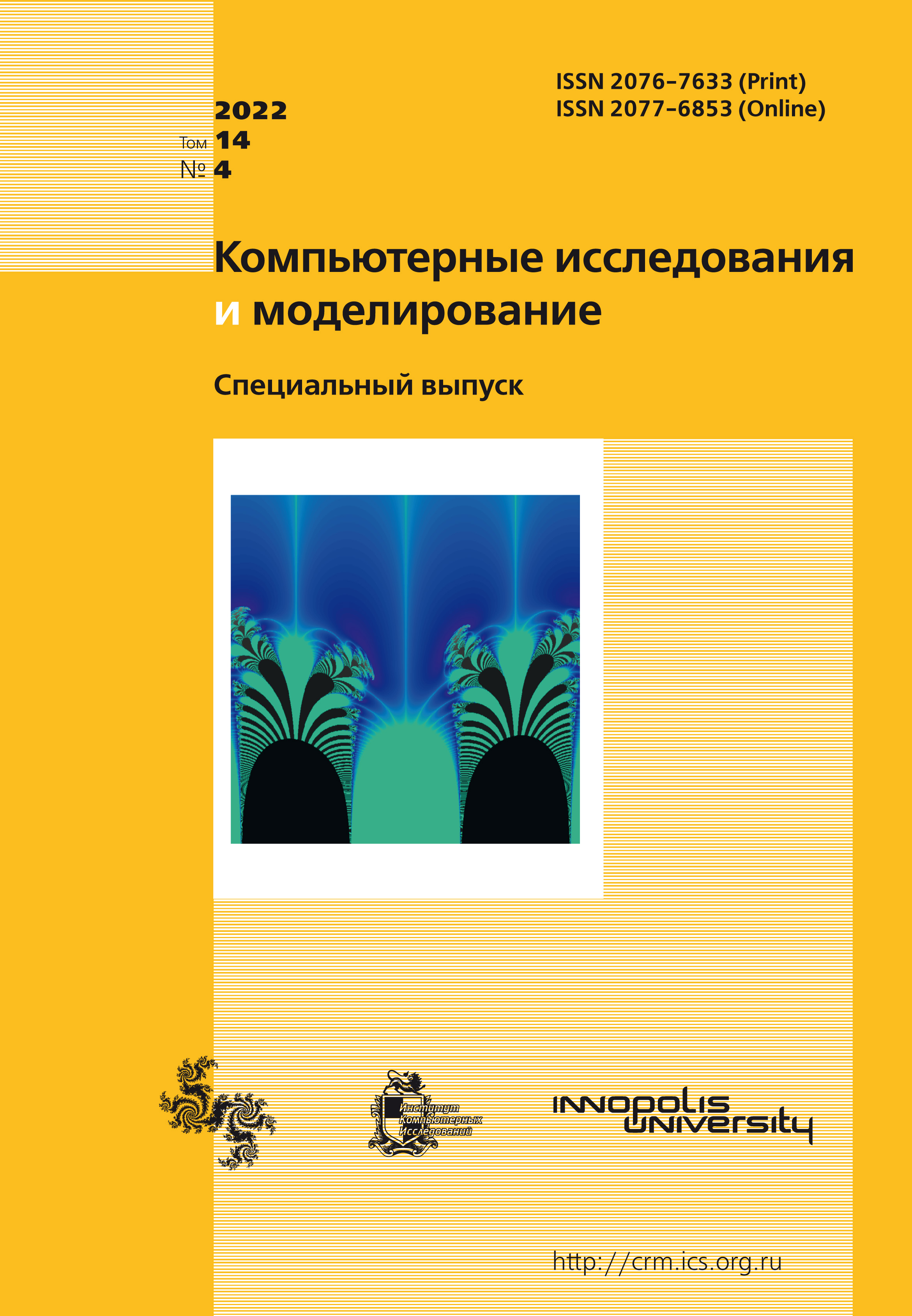All issues
- 2025 Vol. 17
- 2024 Vol. 16
- 2023 Vol. 15
- 2022 Vol. 14
- 2021 Vol. 13
- 2020 Vol. 12
- 2019 Vol. 11
- 2018 Vol. 10
- 2017 Vol. 9
- 2016 Vol. 8
- 2015 Vol. 7
- 2014 Vol. 6
- 2013 Vol. 5
- 2012 Vol. 4
- 2011 Vol. 3
- 2010 Vol. 2
- 2009 Vol. 1
Physical analysis and mathematical modeling of the parameters of explosion region produced in a rarefied ionosphere
 pdf (564K)
pdf (564K)
The paper presents a physical and numerical analysis of the dynamics and radiation of explosion products formed during the Russian-American experiment in the ionosphere using an explosive generator based on hexogen (RDX) and trinitrotoluene (TNT). The main attention is paid to the radiation of the perturbed region and the dynamics of the products of explosion (PE). The detailed chemical composition of the explosion products is analyzed and the initial concentrations of the most important molecules capable of emitting in the infrared range of the spectrum are determined, and their radiative constants are given. The initial temperature of the explosion products and the adiabatic exponent are determined. The nature of the interpenetration of atoms and molecules of a highly rarefied ionosphere into a spherically expanding cloud of products is analyzed. An approximate mathematical model of the dynamics of explosion products under conditions of mixing rarefied ionospheric air with them has been developed and the main thermodynamic characteristics of the system have been calculated. It is shown that for a time of 0,3–3 sec there is a significant increase in the temperature of the scattering mixture as a result of its deceleration. In the problem under consideration the explosion products and the background gas are separated by a contact boundary. To solve this two-region gas dynamic problem a numerical algorithm based on the Lagrangian approach was developed. It was necessary to fulfill special conditions at the contact boundary during its movement in a stationary gas. In this case there are certain difficulties in describing the parameters of the explosion products near the contact boundary which is associated with a large difference in the size of the mass cells of the explosion products and the background due to a density difference of 13 orders of magnitude. To reduce the calculation time of this problem an irregular calculation grid was used in the area of explosion products. Calculations were performed with different adiabatic exponents. The most important result is temperature. It is in good agreement with the results obtained by the method that approximately takes into account interpenetration. The time behavior of the IR emission coefficients of active molecules in a wide range of the spectrum is obtained. This behavior is qualitatively consistent with experiments for the IR glow of flying explosion products.
Copyright © 2022 Motorin A.A., Stupitsky E.L.
Indexed in Scopus
Full-text version of the journal is also available on the web site of the scientific electronic library eLIBRARY.RU
The journal is included in the Russian Science Citation Index
The journal is included in the RSCI
International Interdisciplinary Conference "Mathematics. Computing. Education"






